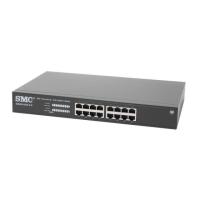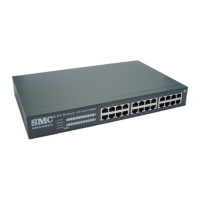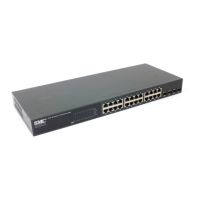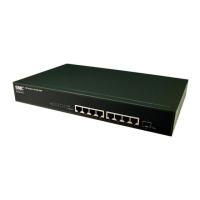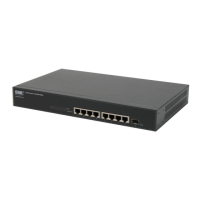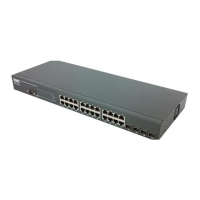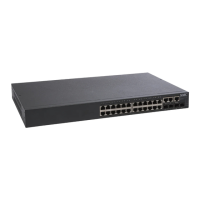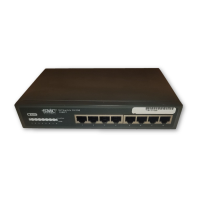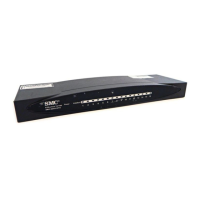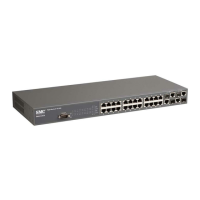C
HAPTER
4
| Configuring the Switch
Power over Ethernet
– 156 –
draw Class 4 current. Afterwards, the switch exchanges information
with the PD such as duty-cycle, peak and average power needs.
◆ All the RJ-45 ports support both the IEEE 802.3af and IEEE 802.3at
standards. The total PoE power delivered by all ports cannot exceed the
maximum power budget of 80W.
◆ The switch’s power management enables individual port power to be
controlled within the switch’s power budget. Port power can be
automatically turned on and off for connected devices, and a per-port
power priority can be set so that the switch never exceeds its power
budget. When a device is connected to a switch port, its power
requirements are detected by the switch before power is supplied. If
the power required by a device exceeds the power budget of the port or
the whole switch, power is not supplied.
◆ Ports can be set to one of four power priority levels, critical, high,
medium, or low. To control the power supply within the switch’s budget,
ports set at critical to medium priority have power enabled in
preference to those ports set at low priority. For example, when a
device connected to a port is set to critical priority, the switch supplies
the required power, if necessary by denying power to ports set for a
lower priority during bootup.
N
OTE
:
For more information on using the PoE provided by this switch refer
to the Installation Guide.
PATH
Configuration, PoE
PARAMETERS
These parameters are displayed:
◆ Reserved Power determined by - There are three modes for
configuring how the ports or attached Powered Devices (PD) may
reserve power:
■
Class – Each port automatically determines how much power to
reserve according to the class to which the connected PD belongs,
and reserves power accordingly. Four different port classes exist,
including 4, 7, 15.4 or 34.2 Watts.
In this mode, the Maximum Power fields have no effect.
■
Allocation – The amount of power that each port may reserve is
specified. The allocated/reserved power for each port/PD is
specified in the Maximum Power fields.
■
LLDP-MED – This mode is similar to the Class mode expect that
each port determines the amount power it reserves by exchanging
PoE information using the LLDP protocol and reserves power
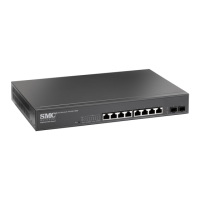
